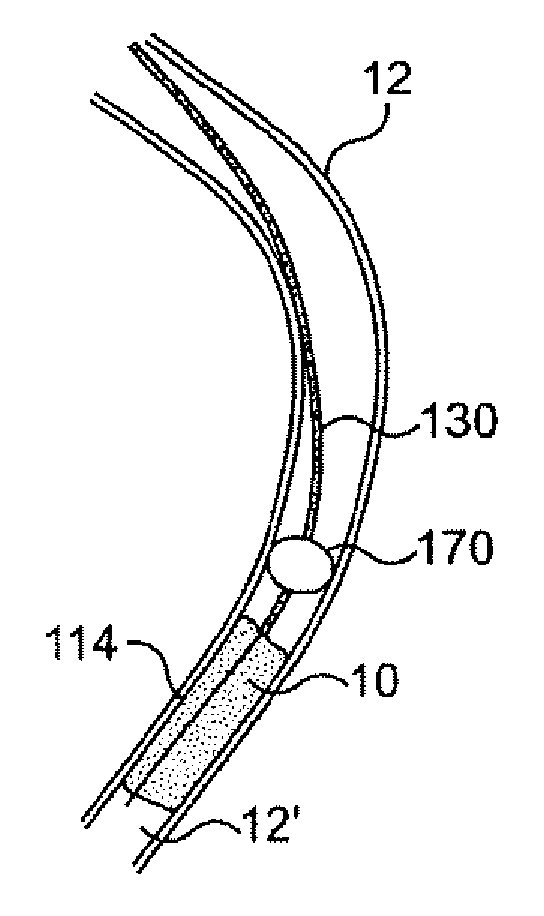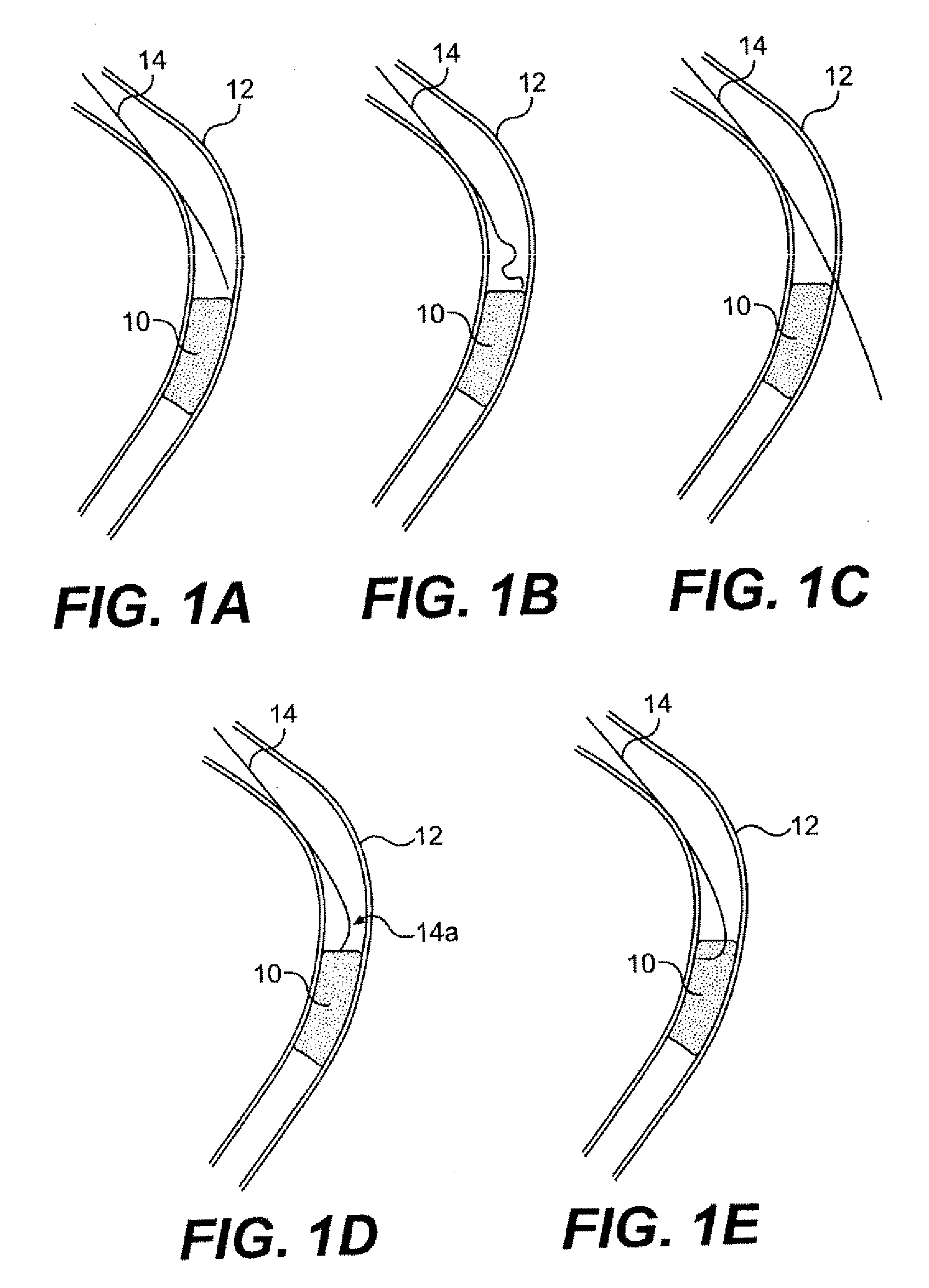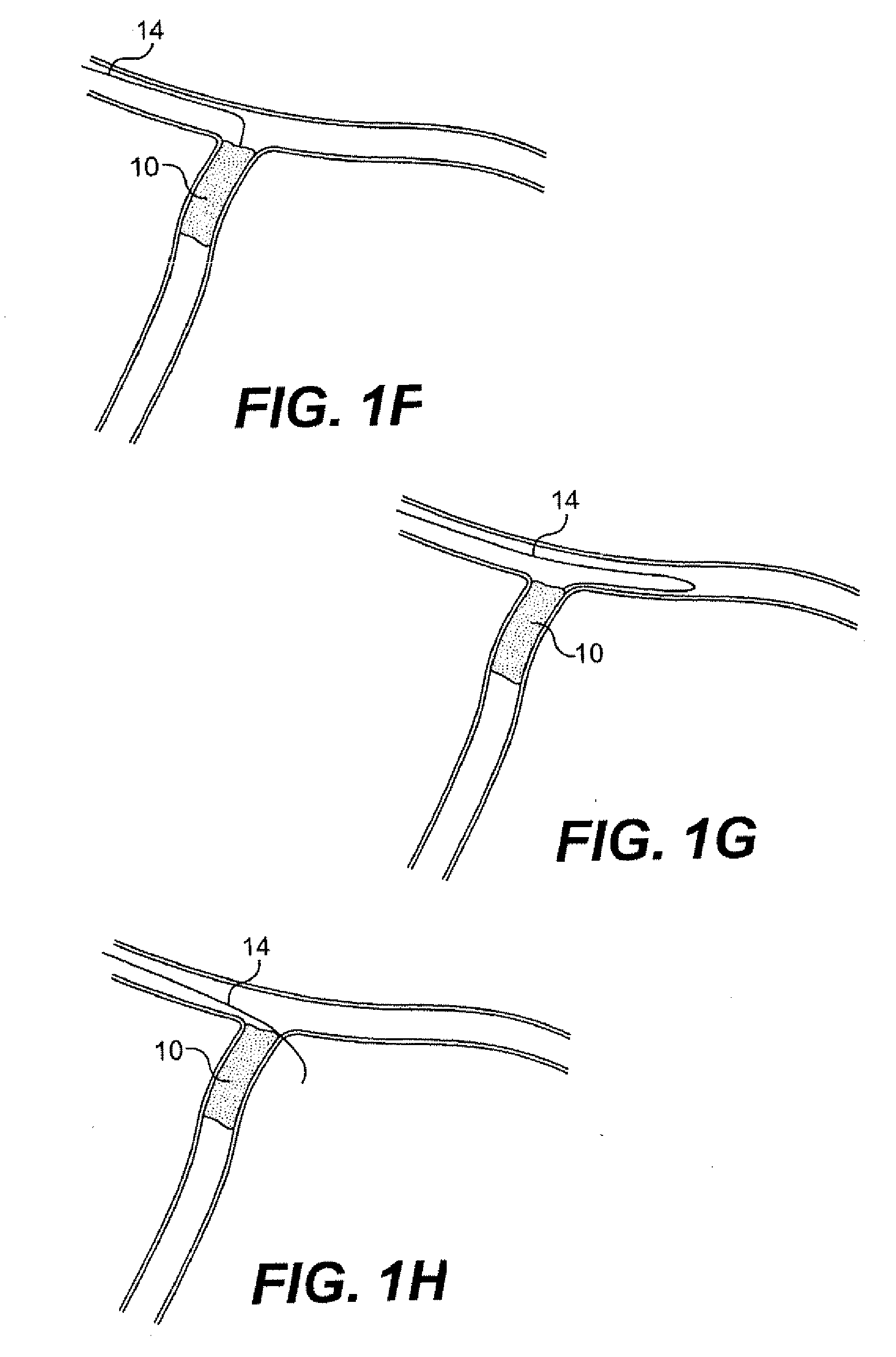Guide wire control catheter for crossing occlusions and related methods of use
a control catheter and occlusion technology, applied in balloon catheters, medical science, surgery, etc., can solve the problems of blockages that cannot be advanced across the occlusion to dilate and treat, damage to the heart, and serious medical consequences,
- Summary
- Abstract
- Description
- Claims
- Application Information
AI Technical Summary
Benefits of technology
Problems solved by technology
Method used
Image
Examples
Embodiment Construction
[0055]Reference will now be made in detail to the present embodiments of the invention, examples of which are illustrated in the accompanying drawings. Wherever possible, the same reference numbers will be used throughout the drawings to refer to the same or like parts.
[0056]According to embodiments of the present invention, systems and methods are provided in which additional support is provided to the flexible end region of a guide wire during advancement of the wire across a lesion in a blood vessel. According to further embodiments, systems and methods are provided in which the direction of advancement of the guide wire tip during crossing of the lesion is controlled These embodiments should improve the success of crossing of the lesion, while minimizing the risk of perforating the blood vessel or crossing into subintimal tissue.
[0057]As used herein, an “occlusion,”“blockage,”“stenosis,” or “lesion” refers to both complete and partial blockages of the vessels, stenoses, emboli, ...
PUM
 Login to View More
Login to View More Abstract
Description
Claims
Application Information
 Login to View More
Login to View More - R&D
- Intellectual Property
- Life Sciences
- Materials
- Tech Scout
- Unparalleled Data Quality
- Higher Quality Content
- 60% Fewer Hallucinations
Browse by: Latest US Patents, China's latest patents, Technical Efficacy Thesaurus, Application Domain, Technology Topic, Popular Technical Reports.
© 2025 PatSnap. All rights reserved.Legal|Privacy policy|Modern Slavery Act Transparency Statement|Sitemap|About US| Contact US: help@patsnap.com



